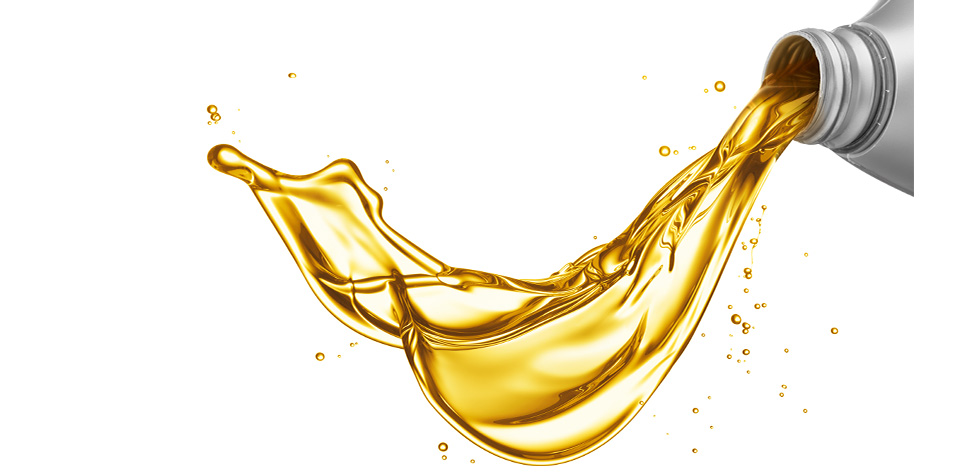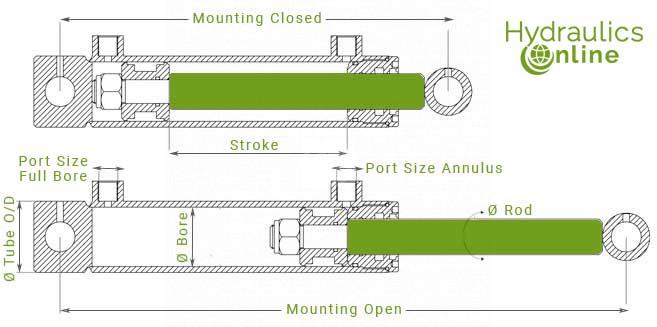


Make sure you keep a close eye on the condition of the cylinder rod for any signs of corrosion, pitting or wear. Too much moisture can cause corrosion, whether this is from the air or from within the hydraulic fluid itself.
If water contamination occurs within the fluid, it can cause major failure of the component or system. The oil therefore needs to be thoroughly cleaned as soon as possible. Moreover, corrosion encourages wearing of the seals, due to increased friction. Pitting causes a similar problem.
Misalignment is often the main cause of uneven wear within a cylinder. Premature wearing of the bearing seals and rod can be caused by side loads, allowing the rod to rub on one side of the bearing. The best course of action for this type of rod damage, is more often than not, a re-chrome or polish. If a cylinder rod is beyond repair, a replacement is the best course of action. However, before you re-install the new rod, it is important to first remove the problem that originally caused the damage – subsequently making the new cylinder more cost-effective.
Many hydraulic failures occur because of hydraulic oil contamination, so making sure your fluid is clean is a vital part of cylinder maintenance If hydraulic oil is contaminated, it must be thoroughly cleaned as soon as any contamination has been found. It is also best to fit high-efficiency filters and change them when necessary.
If a filter has a build-up of debris, a differential pressure gauge can be installed to give you a good indication as to when they need to be changed. This means that you will be preventing a bypass, where the oil flows through the system unfiltered.

If the risk of downtime is not an option, it is always a good idea to hold ‘critical spare’ cylinder parts (see below) or alternate the usage between different cylinders. This break between uses keeps the cylinders in good shape, despite possible particle contamination and harsh operating conditions. It is also wise to undertake cylinder maintenance when they are removed from the system, so that they can be repaired if necessary.
Before re-assembling a cylinder, you may want to first replace all of the seals. Inspection of the cylinders may also give you an idea as to the condition of the entire system. For example, if there is a consistent varnish throughout your system, it could mean that the oil temperature is too high and it needs to be altered.
(*Critical spares analysis – an analysis of system critical hydraulic components and recommended spares, so that you can understand which of your hydraulic components are most susceptible to failure. Furthermore it’s important to understand the impact that this may have on safety, production and systems performance. And finally, it’s just as important to determine the cost and lead times involved in sourcing replacements.)
Every separate component that makes up your hydraulic cylinder is just as important as the cylinder itself. For example, if a pivot pin or clevis is worn or damaged, this could cause slop and play within the joints of the cylinder. This leads to misalignment and wear or more permanent damage.
Hydraulic cylinder maintenance testing is crucial in order to maintain optimal performance. In testing, measurements of any leakage need to be taken and to do this, the typical method is to pressurise the cylinder at the end of stroke. This hydraulic cylinder testing technique is known as the ‘end-of-stroke bypass test’.
The only major disadvantage to this test is that, as the name suggests, the only seals tested are the ones at either end of the cylinder – where there isn’t a lot of deterioration of the component. Realistically, the centre of the tube is most likely to be prone to more damage. Therefore that’s where the test needs to be performed.

In a double-acting cylinder, a ‘mid-stroke bypass test’ is a suitable method to test the piston seals. One of the issues with this technique, however, is how to control the cylinder. For instance, a hydraulic engineer has to hold the component mechanically to keep the cylinder in the centre. Even a smaller sized cylinder can generate 6 to 10 tonnes of force, so this method is very dangerous. With larger cylinders, this task is impossible.
The only test that is appropriate for this is something called ‘hydrostatic testing’. This is a test that is performed after the piston has been held hydraulically in any required position. The pressure intensification that is created helps to keep the piston in one position along the entire cylinder. This ensures that all the seals are functional and there is no leakage. The only consequence this might have is if the pressure is allowed to build up at the piston end of the cylinder. With the valve closed, the pressure at the rod end will be too great, which could cause disastrous failure.
In this case, a pressure-relief valve must be used in the rod end when carrying out the hydrostatic test. This is vitally important for not only the protection of the machinery but also for the personal safety of the engineer carrying out the test.
A hydraulic cylinder repair is a relatively simple process, as they are less complex than other hydraulic components. In fact, in many cases a well-repaired cylinder is indistinguishable from a brand new unit. We offer a hydraulic cylinder repair service, as well as repairs on pumps, motors, power packs and other types of hydraulic equipment.
Internal and external leaking is the most common reason for repairs on hydraulic cylinders. But, by disassembling and closely inspecting the damage to the cylinder, you may be able to detect other problems that aren’t immediately obvious.
Our hydraulic repair service includes a free assessment. This involves stripping down your faulty unit and diagnosing the full extent of work needed. And moreover, providing a quotation and details of how many parts can be salvaged. We may conclude that a repair is not viable, or that your repaired equipment may be unreliable or prone to poor performance in future. If this is the case then we will always contact you to explain why and to quote for a replacement new unit, so that you can choose what you want to do.
When assessing your equipment, our team may also be able to provide recommendations on how to improve your system’s design and efficiency. And as a result, allow you to reduce running costs and minimise the likelihood of any future downtime and hydraulic repair work. We can also undertake a “critical spares analysis” identifying those key system components that we recommend you hold as spares.
There are different types of hydraulic cylinder repair:
The piston seal can become defective if it is distorted, eroded or missing. This is usually a cause of an oversized barrel or bulge during operation. At this point, replacement of the barrel or cylinder is required. Replacing the piston seal only, and not the barrel, is often a short-term fix and may subsequently require more maintenance and costs in the long-run.
A distorted rod seal can be caused by excessive wear of the guide bush or if the rod is bent. The consequence of this is the rod weight pushing on the seal, causing failure. If you replace the rod seal without identifying and correcting the underlying issues, then again, the fix will only be short-term.
In most cases, the chrome on the rod can be inspected and if it is shiny on one side and dull on the other, the rod is bent. The straightness of the rod should always be checked when repairing the cylinder. Bent rods can be corrected by using a press. Whilst it is possible to prevent damage to the hard-chrome plating during this process, if the chrome is spoiled, it must either be re-chromed or the entire cylinder must be replaced. A damaged chrome surface decreases the efficiency and service life of the rod seals. If the rod only has some minor scratches, they can be polished out using fine emery paper.
In light-duty applications, pistons within the cylinders are designed with aluminium or cast iron, and are in constant direct contact with the cylinder bore whilst in operation. Some scratching on the outer surface of the piston poses no risk to the cylinder’s function, as long as the nominal bore diameter does not exceed the minimum diameter of the piston. A good tool to use to check the length could be a micrometer.